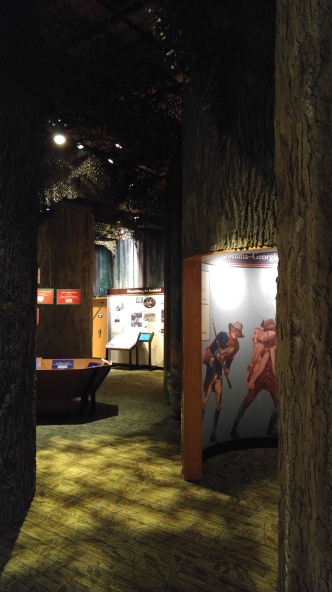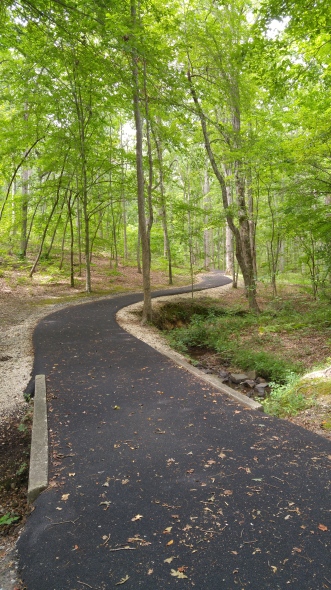By Joanna Grey Talbot
Historical battlefields always draw a unique type of history nerd and I happily admit to being one. We love to visit these places to pay our respects to those who fought so bravely, to ponder how life would be if the battle had ended differently, and to gain a greater sense of the interconnectedness of historical events. Visiting ones that are nothing more than a field or a hillside, which are easier to protect and turn into a maintained site, always makes me think about how difficult it must be to preserve urban battlefields. The former museum employee in me quickly begins to think about preservation but I digress.
I am very grateful that we have a federal government and park service that works very hard to maintain these historical sites, especially as the National Park Service turns 100 this year. Although the park service wasn’t officially created until seven years after he was president, Theodore Roosevelt established the United States Forest Service to help protect public land, a precursor to the park service. We historians are grateful for his foresight.
This was my first visit to the Kings Mountain National Military Park (KMNMP) and I am so glad that I finally made it. Located in South Carolina, just south of its border with North Carolina, the park is easily accessed from Interstate 85. KMNMP is adjacent to the Kings Mountain State Park which has camping and many other activities that you can’t find in the national park portion. My focus, though, was the battlefield. The visitor’s center shows a very informative film about the battle and also has a small museum. The battle took place along a ridgeline so the museum is made to look like you are walking through the forest as you learn about the key players and the battle’s history. On the day I visited a lot of the interactive kiosks weren’t working so I’d love to go back and get the full experience.

Visitor Center Museum
Located just behind the visitor center is the 1.5 mile self-guided Battlefield Trail. It is a paved path the entire way but a word to the wise, wear good walking shoes and be prepared to walk up some steep hills. The path takes you completely around the battlefield, which is a ridgeline so it can be quite a hike if you aren’t expecting it. There are plenty of benches along the way if you need them so just take your time and enjoy the beautiful surroundings.

Battlefield Trail
Leading up to this battle the American patriots had taken a beating. General Washington and his troops had just survived the worst winter of the 18th century at their camp in Morristown, New Jersey. The British, led by Sir Henry Clinton, had captured Charleston, South Carolina, and been victorious at the Battle of Camden, South Carolina. The British were now changing their tactics and General Lord Cornwallis ordered Major Patrick Ferguson, a Scotsman and reputedly the best marksman in the British Army, to travel through the Carolinas and recruit the American loyalists for a militia to protect his left flank. Ferguson recruited a thousand loyalists and trained them in European open-field tactics, where everyone stands in nice, neat, little rows and fires at each other until one line decides to charge.
Ferguson made one big mistake, though. He didn’t just raise a small army. He threatened the American patriots that if they didn’t join his militia he vowed to kill them all. The patriots of western North Carolina, the over-mountain men, gathered together under the leadership of Colonels William Campbell, Isaac Shelby, Charles McDowell, and John Sevier. They marched through the mountains and joined up with more patriot militiamen from North and South Carolina and finally caught up with Ferguson at Kings Mountain. The path that the over-mountain men took is today also a national park stretching 330 miles through four states (www.nps.com/ovvi)
Taking the high ground, Ferguson and his 1,000 strong loyalist militia positioned themselves for battle. 900 of the patriots had pushed on ahead of the rest of the patriot militia in order to not let Ferguson escape. They reached Kings Mountain on the afternoon of October 7, 1780. The patriots had a great advantage, though, as they used guerrilla tactics to fight their way up the steep slopes surrounding Ferguson and his men. Today the area is heavily wooded but at the time of the battle trees would have been much bigger and wider spaced apart. The top of the ridgeline was nearly treeless so the loyalists didn’t have much to hide behind.
This was one instance where having the higher ground was not to the advantage. Ferguson was eventually killed and after being repelled twice by bayonets the patriots took the ridge. The battle took just over an hour but changed the course of the war. Not only was it the only Revolutionary War battle where all but one of the participants were Americans, but it put a stop to the British plan of conquering the South and thereby winning the war. Just over a year later General Lord Cornwallis surrendered to General Washington at Yorktown, Virginia.
I hope all of you will get a chance to visit this great national park one day. Not only does it give you a chance to be out amongst this beautiful rocky spur of the Blue Ridge Mountains, but you get to learn about a fascinating and important Revolutionary War battle at the same time. Get out and explore!


Joanna,
Just getting to read this…great, as always.
I’m still amazed that you are able to get Tripp to go to these places with the brown signs. He developed an aversion to them at some point in our travels in his youth.
Anyway, so looking forward to our visit in a few weeks.
Hugs & blessings
Ms. Debie
LikeLike
Ha he didn’t go with me to this one. I went on a weekday by myself. 🙂
LikeLike